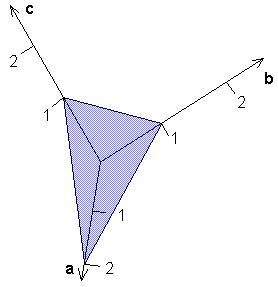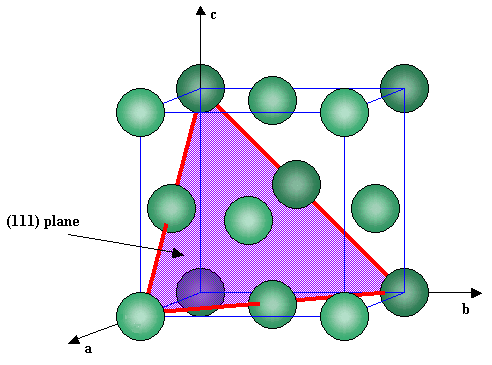3 Miller Indices
It will become important to be able to label the planes of atoms in a crystal. The standard method for doing this is by ‘Miller indices’. The directions of the lattice vectors a, b and c are first identified as the lattice axes. The units of a, b and c are the number of lattice points; for example, the first lattice point lying on the a axis has a value for a of 1.
Having identified the plane of atoms of interest, the points of intersection of this plane with the lattice axes are located. The reciprocals of these values are taken to obtain the Miller indices. The planes are then written in the form (h k l) where h = 1/a, k = 1/b and l = 1/c.
Thus the (1 1 1) plane intercepts all three axes at 1. The (1 0 0) plane intercepts the a axis at 1 but never intercepts the b and c axes; the (1 0 0) plane is perpendicular to the a axis and lies parallel to the b-c plane. These planes of atoms mean different things in different co-ordinate systems. Thus it is important to know the co-ordinate system being used; in particular, whether it is the primitive or conventional co-ordinate system.



